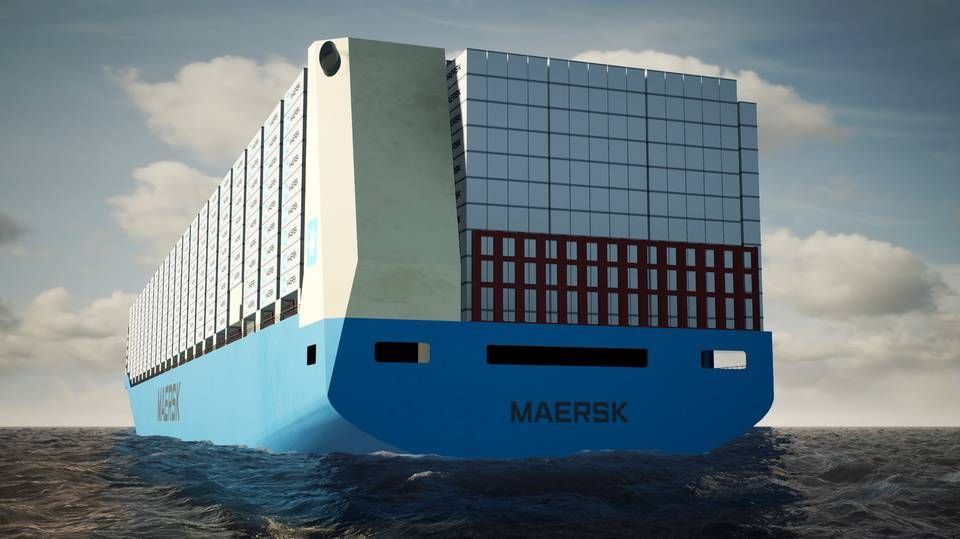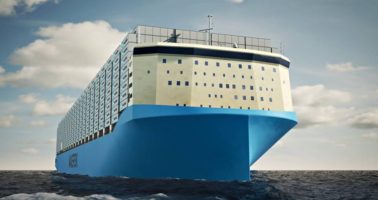December 8, 2021
The Maersk design is unique in the industry and enables energy efficiency per container transported to be improved by 20% compared to the industry average for ships of this size. In addition, the entire series is expected to save around one million tons of CO2 emissions per year, offering our customers carbon-neutral transport on maritime routes.
The vessels will be 350 m long and 53.5 m wide, and will look very different from previous large container ships. The crew quarters and bridge will be located at the bow to allow for greater container capacity. The chimney will be located on the port side of the stern of the ship, which will provide more space for the cargo. This separation between the housing and the funnel will also improve efficiency in the port, as the 22 piers (21 on the port side) will be laid out with no superstructure between the first and last.

Maersk says this project has taken almost five years to complete, all while traversing uncharted naval design territory. To make this new design possible, several challenges had to be faced. Firstly, the crew's comfort had to be ensured with accommodation located in this more exposed location. Furthermore, hull strength was also a key parameter that had to be safeguarded, as the accommodation block normally functioned as a "reinforcement" of the hull when placed aft. New arrangements for lifeboats and navigation lights had to be developed, as well as new cameras to support sailors' vision during navigation.
Built by Hyundai Heavy Industries, the series features an innovative dual-fuel engine configuration that can run on both methanol and conventional low-sulfur fuel. With 16,000 m3 of green methanol tank capacity, ships will be able to complete a full round trip, for example Asia-Europe, with green methanol. The engine and fuel tanks will be located in the hull, under chimneys 17 and 18.
Renewable methanol, also known as green methanol or e-methanol, is a very low carbon chemical that is produced from sustainable biomass (called bioethanol) or from captured carbon dioxide and hydrogen produced from renewable electricity.
The first ship is scheduled to go into operation in early 2024. We look forward to taking these ships across the world's oceans and continuing to work on creating new solutions to improve the efficiency of our customers' future supply chain.
Maersk could propose these vessels for the green corridor shipping between Asia and Europe just announced at COP26.

